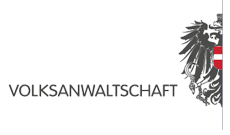Stoisits: The Alpine Convention and the building of the road S37/S36
The Alpine Convention and the building of the road S37/S36
ORF-Series "Bürgeranwalt" (“Advocate for People”) – Broadcast of November 22th, 2008
The construction of a new high-level trunk road between Carinthia and Steiermark with a link to the S36 has been proposed. The project includes widening the secondary road B317 Friesacher Straße between Scheifling (S36) and Klagenfurt North (A2) to the S37 Klagenfurt trunk road to 4 lanes as well as widening the secondary road B317 Friesacher Straße between St. Georgen and Scheiflinger Ofen to the S36 Murtal trunk road to 4 lanes.
This will make the route Vienna-Klagenfurt 30 km shorter than the connection via the South Motorway (A2) and it is expected that the heavy vehicle traffic will move from the A2 to the new transit route.
The population, which joined forces in an action group, will be exposed to massive levels of noise, particulate matter and vehicle emissions, threatening their environment.
Ombudsperson Stoisits criticised the non-observance of the Traffic Protocol of the Alpine Convention which was also the issue put forward by the action groups.
The Traffic Protocol of the Alpine Convention was adopted on 31.10.2000 by Austria, Germany, Liechtenstein, Switzerland, France, Monaco, Italy, Slovenia and also by the EU. Nationally the Traffic Protocol has statutory rank and is directly applicable.
Pursuant to the Traffic Protocol the contracting parties abstain from building high-level roads for cross-Alpine traffic. Furthermore, the contracting parties undertake to realize high-level roads for inter-Alpine traffic only under the pre-conditions set out in the Protocol (e. g. assessment of suitability, a positive environmental impact assessment, the need for transport capacity which cannot be met by a better utilization of existing road and railway capacities). The Protocol, however also includes an exemption clause providing that it is not applicable to traffic projects, which at the date of its adoption have been passed within the framework of the legal system or for which the need has been statutorily determined.
From the view of the Federal Ministry of Traffic, Innovation and Technology the construction project constitutes a link for the inter-Alpine traffic. It is not subject to the Traffic Protocol as it had been included in Schedule 3 of the Federal Road Act 1971 and therefore passed at the date of the adoption of the Traffic Protocol.
Ombudsperson Stoisits replied that at that time only the B317 and not the proposed 4 lane Alpine Transit Motorway S37 was included as such in Schedule 3 of the Federal Road Act 1971. Moreover, at that time only the S18 Bodensee trunk road and the B179 Fernpass road were identified as exceptions from the applicability of the Protocol and thus from the point of view of the Office of the Ombudsperson it is obvious, that the protocol applies to the S37.
Ombudsperson Stoisits further criticized the inexplicable interpretation by the Department involved in the categorisation of a road link as cross-Alpine or inter-Alpine.
The representative of the Federal Ministry of Agriculture and Forestry, Environment and Water Management, which also assumes the applicability of the Traffic Protocol, stated that it needs to be clarified by the court whether the proposed link is to be categorized as cross-Alpine or inter-Alpine.
As well as the non-observance of the Traffic Protocol Ombudsperson Stoisits also criticised the strategic traffic assessment (SP-V) for the environmental impact assessment which had been conducted inadequately. Ombudsperson Stoisits at the same time referred to the statement on this matter, issued by the Federal Ministry of Agriculture and Forestry, Environment and Water Management and suggested compliance with the suggestions of that Department (local bypass roads, advance railways, consideration of public transport).
The representative of the ASFINAG advised that currently the issue was under consideration whether the planned road was realizable. Definite findings are expected in spring 2009.
The investigation procedure of the Office of the Ombudsperson will be continued.
